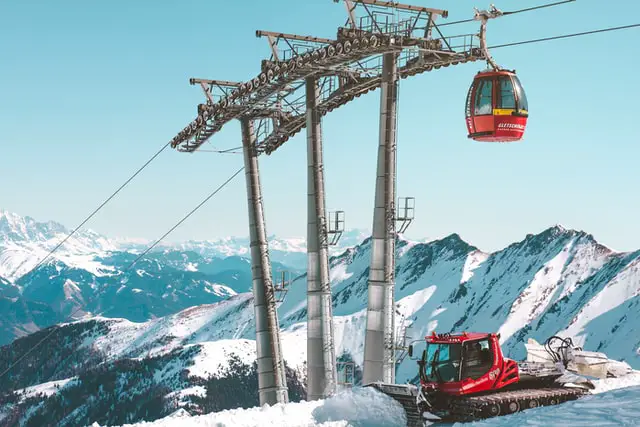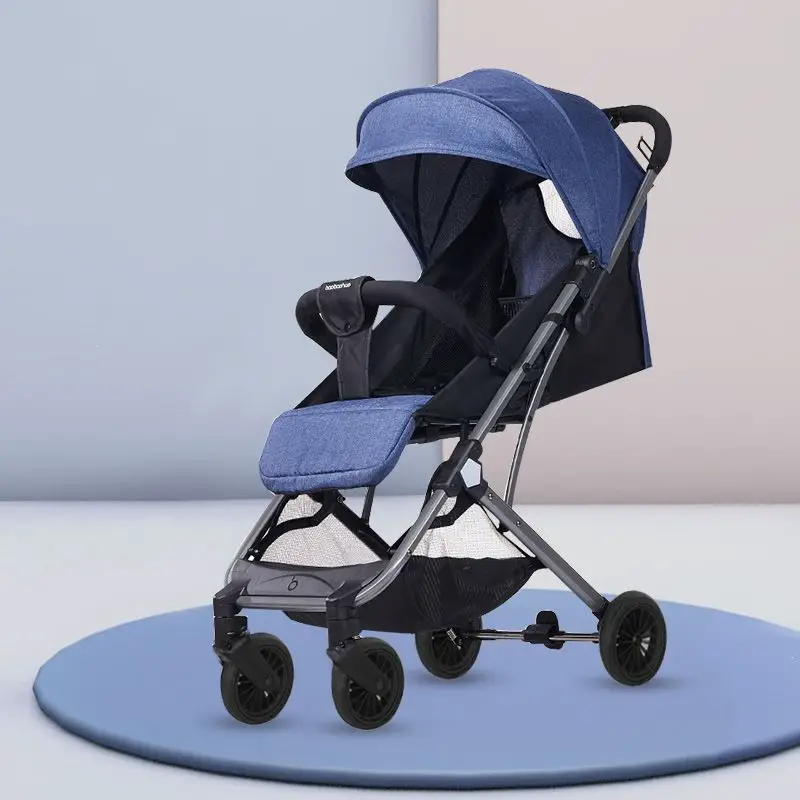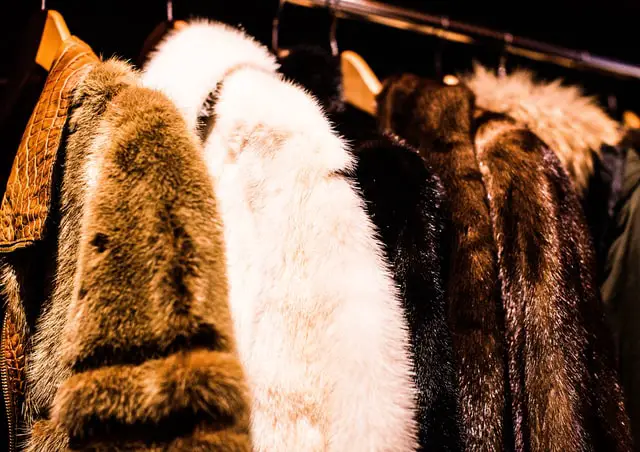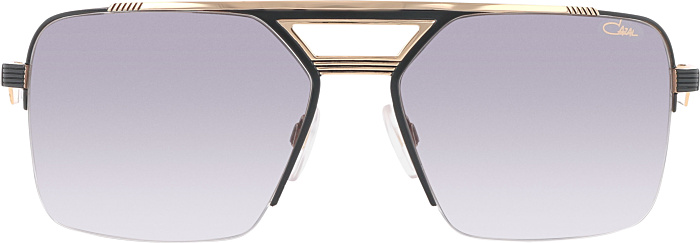Why are lift tickets so expensive?
There are several reasons why lift tickets may be expensive:
-
Operating costs: Ski resorts have many expenses, including maintaining and grooming the slopes, snowmaking, lifts, and hiring staff. These costs can be expensive and contribute to the overall price of a lift ticket.
-
Location: Ski resorts in more popular or desirable locations, such as in the Rocky Mountains or Europe, may have higher lift ticket prices due to higher demand.
-
Time of year: Lift ticket prices may be higher during peak seasons, such as holidays, or during the winter months when skiing is most popular.
-
Package deals: Many ski resorts offer package deals that include lift tickets, rentals, and other amenities, which can make lift tickets seem more expensive when compared to purchasing them separately.
-
Marketing and branding: Ski resorts may also be more expensive due to marketing and branding efforts. A ski resort that is well-known and has a reputation for offering high-quality amenities and services may charge a higher price for lift tickets.
Frequently Asked Questions:
Advance purchase or return lift tickets?
When buying a lift ticket in Japan, there are two ways you can go about it: first, buy it before you arrive at the mountain; second, buy it when you arrive. Japan is a country where people generally plan their trips thoroughly enough to commit with absolute certainty to a set itinerary. If you’re among them, then you’re probably all set for advance purchase.u003cbru003eu003cbru003eShould you be one of the majority, however, who will probably go with the flow and buy his or her ticket at the slope-side on the day of departure, your options may be more limited. Some hotels in Japan do still offer discounts for tickets purchased through their website u002du002d check if yours does before you leave.u003cbru003eu003cbru003eRegardless of which way you decide to go, your rei lift ticket will be valid for the entire season. If you only use it once or twice, though, it may feel like a waste. And if you end up deciding to buy another ticket on the day of departure, and then find that you’ve already bought one, your second ticket will now be wasted.
What day should I get my rei lift tickets?
The optimal date for advance purchase is one month before your trip. You can also consider buying tickets whenever you’re near the mountain, but it’s recommended that you do so at least two weeks before your trip, and ideally the day of.
Do rei lift tickets expire?
Yes, they do. Any unused portion of the ticket is lost after one year and cannot be used again unless you buy a new one. So, if you buy one day’s worth of lift tickets, you need to use them before the end of the following year. This is true for both single-day and multiple-day tickets, and for tickets purchased pre-season or on-site.
How much are rei lift tickets?
While the cost of a season’s worth of rei lift tickets may seem high at first u002du002d it may be up to ¥20,000 for a single day, depending on the resort u002du002d it can work out cheaper than purchasing them daily. Bear in mind you’ll also receive discounts at area businesses just by bringing your ticket with you.
What kind of terms do rei lift tickets come with?
Although you may find that rei lift tickets are more expensive than their social counterparts, there are some benefits to taking the family lift. Probably the biggest is ski pass discounts. In some cases, these are more than just one-day deals.
How can I get a discount?
If you’re staying at a hotel, ask if they offer any discounts on lift tickets. In addition to hotels that offer tickets in their rooms and on their websites, many ski resorts will also offer discounted tickets if you simply show your hotel room key u002du002d check before you leave to make sure your hotel is one of them. Some hotels also offer special prices on ski lessons and equipment rentals.u003cbru003eu003cbru003eIt’s also a good idea to know whether your resort offers discount ticket packages or multi-day promotions. If they don’t, it’s not a deal-breaker u002du002d you can still purchase discounted tickets from other sources. If you do want to purchase multiple days of lift tickets, for example, you may be able to save money by purchasing them in advance and using them over a longer period u002du002d say two weeks rather than three days.
Are cheap rei lift tickets?
If your trip is just for a day or two and you don’t have time for advance purchase, consider buying a discounted ticket directly from the resort. While there are some restrictions u002du002d such as blackout dates and limited quantities u002du002d the package can include discounted lift tickets, ski rentals, ski or snowboard lessons, and even ski or snowboard rental discounts.
What are the differences between single-day lift tickets and multiple-day tickets?
Single-day tickets, also known as one-day lift tickets, get you one day of skiing or snowboarding at a time. Typically they’ll either be discounted or come with other perks u002du002d like special offers on hotel rooms or lessons u002du002d that can make them worth the price in some cases.u003cbru003eu003cbru003eIf you don’t mind committing to a multi-day trip or don’t want the stress of trying to decide whether to buy a single-day ticket on the day of departure, long-term tickets can offer monetary and other benefits. They’re usually more expensive than single-day lift tickets, but they can also be a better value in some situations.
Are there any other ways to save money on lift tickets?
Save some money on ski lessons. Some resorts offer special packages with coupons that can make lessons cheaper than those offered by other companies. And if you’re a beginner, the best time to buy is the off-season when ski schools are less crowded and there are more instructors available per class.u003cbru003eu003cbru003eBut if you’re strapped for cash and just want to get out on the slopes and get a feel for your surroundings, look into free events u002du002d like the occasional free shuttles to resorts or contests that award lift tickets. And if you’re staying at a hotel, ask if they offer any discounts on lift tickets.
What are the hours of operation?
Operating hours vary by resort, but in general, you can expect that the lifts will be running between 8 AM and 8 PM. Some resorts have night skiing, in which you can enjoy special events from dusk until 10 PM. You’ll want to confirm operating hours with your resort before you leave.
How do I get a free lift ticket?
If you’re a member of one of the many youth programs offered at ski resorts, you can receive discounted lift tickets in advance. Some accommodations will also offer their guests special deals on lift tickets. Discounted tickets can also be purchased through some retailers, such as travel websites and magazines.
What is the difference between fast and slow lifts?
Fast lifts are called high-speed or quad lifts. They move at a pace of up to 18 kph (11 mph) u002du002d or even faster at some resorts. They’re capable of transporting 80 to 100 people per hour. This makes them a good option if you’re trying to get to the top of a mountain in a hurry or if you want to get multiple runs in during the time you’d normally spend on one run.u003cbru003eu003cbru003eSlow lifts are called fixed-grip or double-chair lifts. They move at a pace of up to 10 kph (6 mph). While they’re not as fast as high-speed lifts, they are good for riders who want a smoother ride.
What is the difference between fixed-grip and detachable lifts?
Detachable lifts are called high-speed or quad lifts. They move at a pace of up to 18 kph (11 mph) u002du002d or even faster at some resorts. They’re capable of transporting 80 to 100 people per hour. This makes them a good option if you’re trying to get to the top of a mountain in a hurry or if you want to get multiple runs in during the time you’d normally spend on one run.u003cbru003eu003cbru003eFixed-grip lifts are called low-speed or double chairs. They move at a pace of up to 10 kph (6 mph), making them more suitable for beginners, young kids, and slower skiers and riders.
How do rei lift tickets work?
The basic rei lift tickets come with your lift ticket and allow you to access a certain number of bars and restaurants in the resort area. You can use them as much as you want, but once you’ve used them all up, you’ll have to pay for additional food and beverages.
How do ritzy lift tickets work?
Ritzy lift tickets offer various packages that provide extra perks. They can include discounts on ski rentals and lessons. The most expensive ritzy lift tickets are those that offer food, lodging, ski rentals, and other valuable bonuses when you buy them as part of a package deal.
What are the benefits of buying a multi-day lift pass?
When you buy a multi-day pass, you can ski and ride as much as you want for two or three days. While some resorts offer more than one type of ticket that covers a certain number of days, this is not the standard in Europe.
How much are mammoth lift tickets?
Prices are between $73 and $89.
How much is vail lift ticket?
Vail is a ski resort in Colorado with a range of activities for all seasons. Vail has the second most skiable acreage in North America, after Whistler Blackcomb. With over 7,000 acres of skiable terrain, there are plenty of runs for both experts and beginners alike. This post will explore some fun outdoor recreational activities for visitors to enjoy during the summer months at Vail with mountain biking and hiking being two highlights. A day passes most weekends will cost you around $200.
How much does ski lift cost?
The average cost of a ski lift in North America is $2.07 million and around $1.75 million in Europe, according to Ski-Lift.com, which compiles information on ski lifts and prices through sources like web searches and local newspapers.u003cbru003eu003cbru003eYou might be thinking, u0022This sounds expensive!u0022 Well don’t worry because this is the average cost — there are many more affordable options out there! And remember that these prices are only for the individual lift, not including skis or rental gear.u003cbru003eu003cbru003eThe average cost of a ski lift can vary quite a bit depending on the lift, the estimated number of skiers per day, location, and size. Plus you’ll need to take into account other expenses such as maintenance and upkeep once the lift is up and running.u003cbru003eu003cbru003eFor example, Some ski lifts have relatively low rates while others are extremely expensive. Take Okemo’s Gondola for example at $350,000 per year. This is a good example of an expensive lift.u003cbru003eu003cbru003eOther ski lifts can be much less expensive, such as the Old Cascade Ski Lift at $5,000 per year. u003cbru003eAlternatively, Ski-Lift.com lists another ski lift as affordable at $400 for the ski lift and $764 for maintenance and upkeep.u003cbru003eu003cbru003eOne of the biggest factors affecting price is the size and how many people can fit on a chairlift. For example, u003cbru003eThe Magic Carpet at Breckenridge is one of the biggest attractions in Colorado. The lift is costing $1.25 million and handles 5,000 skiers during its peak season.u003cbru003eu003cbru003eAnother factor that can affect the price is how far the chairlift travels and if it goes up a mountain or across the valley. Depending on how far it has to go to get from point A to point B, construction costs will vary accordingly.u003cbru003eu003cbru003eAnd finally, you need to take into account the insurance costs. These costs can vary because they determine how much of a discount the ski resort gets on their insurance rates. For example, The riskier the area is, the more coverage you’ll have to avoid paying large deductibles if an accident occurs.
What time do the lifts open at copper mountain?
Hours of operation are 9 am-4 pm on weekdays and 8 am-4 pm on weekends and holidays.
How much are lift tickets at the big sky?
The price for youth is about 90 dollars, and the price for adults is about 150 dollars
Can you ride ski lifts without skiing?
If you’re not a skier but want to take part in the fun, we’ve got some good news. Yes, you can ride ski lifts without skiing!u003cbru003eu003cbru003eWe know what you’re thinking: u0022I don’t have any equipment and I’m not going to rent equipment.u0022 Don’t worry, that’s what we are here for. The 10 best places to ride ski lifts without skiing all offer rentals so that anyone can slide down the mountain on two sticks.u003cbru003eu003cbru003eu003cstrongu003eThe Sky Chair at Vailu003cbru003eu003c/strongu003eu003cbru003eVail, Colorado is one of the most popular ski resorts in the country. This means that the place can get a little crowded. If you just want to take a ride up and back down without spending money on equipment, you can do it on the Sky Chair at Vail. It’s one of their 48 chairs, so if you’re lucky, there will be room for your legs to dangle without brushing against other skiers or snowboarders.u003cbru003eu003cbru003eu003cstrongu003eThe Summit Quad at Boyne Highlandsu003cbru003eu003c/strongu003eu003cbru003eYou’ll find the Summit Quad at Boyne Highlands in Northern Michigan. The terrain is very beginner-friendly with lots of rolling hills and beautiful views. If you want to take a ride up and back down without having to rent equipment, you can do it for free on the Summit Quad. After all, you’re supposed to be taking a break from skiing anyway.u003cbru003eu003cbru003eThe Summit Gondola at Breckenridgeu003cbru003eu003cbru003eYou’ll find this lift in the town of Breckenridge, Colorado. This is a pretty easy ride as it’s only 1,411 feet long and makes a wide loop beginning with a very high vertical drop of 5,300 feet – and ending with a fairly gentle gliding into the station at 4,359 feet. If you want to take a break from the skiing but don’t want to rent equipment, you can enjoy this ride for free.u003cbru003eu003cbru003eThe u0022Snow Plowu0022 at Whistler Blackcombu003cbru003eu003cbru003eYou’ll find the u0022Snow Plowu0022 at Whistler Blackcomb in British Columbia, Canada. This is a beginner run traveling from the top of the Peak Chair down the mountain and ending just above Park Garibaldi Lift. If you’re looking for a unique experience, this is the ride for you. The terrain is gentle, but since it’s so steep and fast, it can still be a little scary. That’s why they call it the u0022Snow Plow.u0022u003cbru003eu003cbru003eThe Peak Chair at Mammoth Mountainu003cbru003eu003cbru003eYou’ll find the Peak Chair at Mammoth Mountain in California, USA. The peak is the highest point of the mountain, so you’ll have some excellent views on this ride. The lift is known as a u0022detachable quadu0022 – so that even if it’s busy, you can still enjoy the mountains with a clear path ahead of you.u003cbru003eu003cbru003eLeitner-Poma Giant Double Chair at Seven Springsu003cbru003eu003cbru003eYou’ll find this lift at Seven Springs in Pennsylvania, USA. The Giant Double Chair is one of seven lifts there and one of only three double chairs on the mountain. There’s something cool about riding a double chair, so if you want to take a ride up and back down without having to rent equipment, this is the lift for you.u003cbru003eu003cbru003eThe Merry-Go-Round at Park City Mountain Resortu003cbru003eu003cbru003eYou’ll find this lift at Park City Mountain in Utah, USA. This is a family-friendly place that has been voted one of the best resorts in North America. The lift is also very beginner-friendly, so if you’re still in the beginner phase but want some experience before you buy your equipment, this is the lift for you.u003cbru003eu003cbru003eThe Twin Chair at Alpine Meadowsu003cbru003eu003cbru003eYou’ll find the Twin Chair at Alpine Meadows in California, USA. They have several lifts here and this one is a double chair – so it travels up and down the mountain with two chairs on each lift. This is a very beginner-friendly lift, so if you’re wanting to take your first trip up and down without having to buy equipment, it’s highly recommended.u003cbru003eu003cbru003eThe Super Chair at Purgatory Resortu003cbru003eu003cbru003eYou’ll find this lift at Purgatory in Utah, USA. This is a very beginner-friendly lift because it travels on a very gentle slope – making the ride much more enjoyable than those that go straight uphill and then straight down again. If you’re just getting into the sport and want some experience, this is the lift for you.u003cbru003eu003cbru003eThe Chubb’s Run Quad at Rocky Mountain National Parku003cbru003eu003cbru003eYou’ll find this lift at Rocky Mountain National Park in Colorado, USA. This is a very beginner-friendly lift traveling from the top of the Wild Basin area down to the Canyon Village parking lot. If you’re looking for something to do while your high school kids are on the mountain, this is a good choice.u003cbru003eWhen you’re ready to take a break from skiing, there are a lot of fun ski lifts that offer free rides without skis. If you’re ready to enjoy some new terrain without the need for equipment, there are lots of choices.
How much are lift tickets at sun valley?
The cost of a lift ticket at Sun Valley may depend on the type of ticket you’re buying and when you bought your pass. The cost for a one-day pass is $48, while multi-day passes can incur as much as $200. For more information on alpine skiing at Sun Valley, including the latest information about ski passes and prices, go to their website.u003cbru003eu003cbru003eThe Sun Valley lift tickets are the least expensive in the state and by far the most economical options for families, groups, and individuals. Lift tickets may be purchased at any of over 30 retail locations around town or online. The ticket window is incorporated into the Ski Shop, located near the base of the tram.
What does a lift ticket include?
A lift ticket is a card that provides the user with passage to a ski resort for the day and includes access to all of the runs, lifts, and other amenities at that resort. It also gives you access to any other resorts on the same mountain or chain across the state.u003cbru003eu003cbru003eThe prices vary from resort to resort so it’s important to look into them beforehand. You can find deals online or through your local ski shop.













